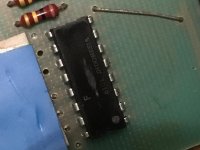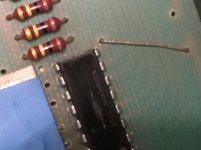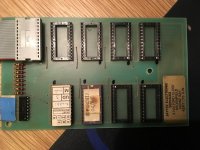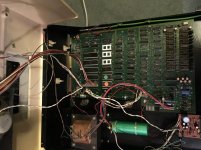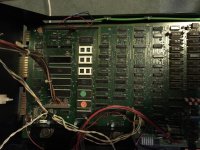First time Posting on this forum though I have been following for a little while.
I have a PET 3000 series (well 2001-N) and it has an 8 ROM Pager board inside it with a ribbon cable connected to ROM $9000.
There also is a special edit ROM (called rather unhelpfully ROM-X 80066) but not sure if they are related (all I can detect so far with this ROM is I get auto repeat on any key I press though think there maybe more).
I have tried googling for info on the board but cannot really identify how to use it. I believe I need to use some POKE sequence but wondered if anyone has ever come across this and if so any idea how to work it ?
The best I can find that maybe similar, is an AD from Reprodesign Microcomputer systems (and reference to it in Getting More from your Pet)
Pics of the board and ROM chip are attached (the connector on the UP doesn't do anything).

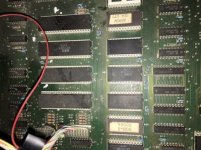
I have posted on the Commodore.CA Forum and TPUG (apologies if you have already seen the thread!) but wanted to reach out to a wider audience as not sure if this is a UK Home Brew piece of kit or was available across a broader market.
Many Thanks in advance
I have a PET 3000 series (well 2001-N) and it has an 8 ROM Pager board inside it with a ribbon cable connected to ROM $9000.
There also is a special edit ROM (called rather unhelpfully ROM-X 80066) but not sure if they are related (all I can detect so far with this ROM is I get auto repeat on any key I press though think there maybe more).
I have tried googling for info on the board but cannot really identify how to use it. I believe I need to use some POKE sequence but wondered if anyone has ever come across this and if so any idea how to work it ?
The best I can find that maybe similar, is an AD from Reprodesign Microcomputer systems (and reference to it in Getting More from your Pet)
Pics of the board and ROM chip are attached (the connector on the UP doesn't do anything).


I have posted on the Commodore.CA Forum and TPUG (apologies if you have already seen the thread!) but wanted to reach out to a wider audience as not sure if this is a UK Home Brew piece of kit or was available across a broader market.
Many Thanks in advance

